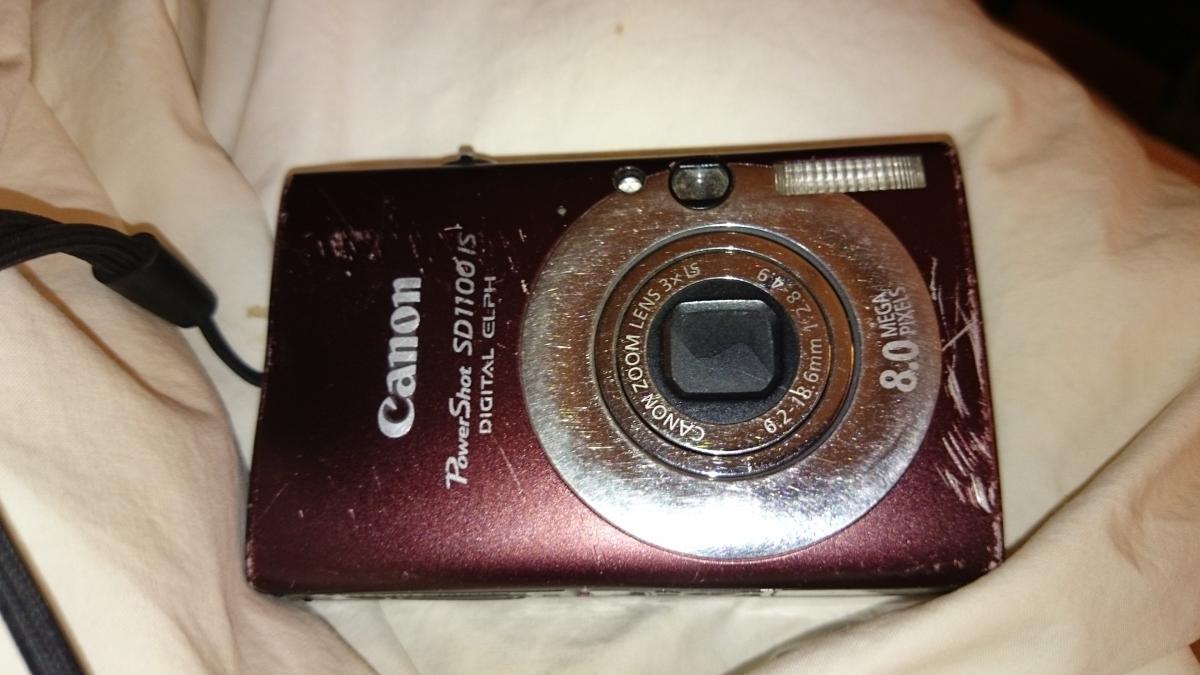Everything posted by ISX
-
Help Me Out
I don't see how a turbo spinning very low rpm with almost no load can wear it out even if the oil pressure was low. The low idle thing being bad is purely from cylinder wash occurring. Secondly, the coking of high EGT on the turbine shaft has a lot more effect on performance than any wear on the journal. Thirdly, the journal is brass, the shaft is like carbide steel, the shaft will never wear, the brass will. I saw no wear on my journals when I took mine apart after 300k soo... Plus, I think the turbo spins so fast even at idle (with warm engine oil) that it would easily center itself within the journals with minimal oil as long as the shaft was balanced. I don't know anything about air filter brands other than repeating after others.
-
fuel prices today!
What is non ethanol?
-
fuel prices today!
Saw $1.89 here. The interesting thing based on what you guys say is that it's not that varied. Usually you guys are much higher than me, but it seems everyone is under a dollar now. Weird how that worked out. But yes, diesel is a damn dollar higher here.
-
Vacation Pics
I was sold when I saw the trout
-
anti-gel
Personally I would get the optilube. The HFRR speaks for itself and cetane isn't a bad thing. The higher the cetane, the more readily the fuel ignites. In the winter when diesel sure isn't readily igniting, higher cetane helps. Biodiesel has a very high cetane and on a cold morning it starts up in half a crank whereas regular diesel cranks a few times. No matter what antigel you use, it will raise cetane, its just the nature of antigel, so why not use the one that won't sacrifice lube.
-
Mpg/idle fooler install question?
As long as they connect back to the same wire then you are good to go. Spliced connections don't add any resistance if done right. Soldering is best, crimping is OK. Just make sure to weatherproof it (solder and shrink wrap) as that is what will cause resistance issues if they get corroded.
-
Ram 1500 diesel
I think buying a new diesel is probably better than used. We've all seen the youtube vids of kids holding their trucks to the floor trying to get them to start at -20F and letting it sit at 2000RPM until the engine is warm enough to not die again. That's drastic but you never know what problems lie just 1000 miles down the road. Buying new, it's yours to maintain. A gasser I wouldn't care so much about. They don't have expensive components to replace like a diesel so whatever goes wrong isn't going to send you in the poor house. With these new diesels being so finicky, I wouldn't chance it on some pre owned guy who probably ran dirty corn oil through it. A 12 valve wouldn't matter much but people still use that ideology on these new engines and either luck out or pay the price. Then there is the ride quality....nothing beats something new. My dodge and jeep both hop over little tar patches in the road, it sucks. New cars don't even notice railroad tracks. I am very interested in hearing more so keep us posted Volkswagon.
-
Ram 1500 diesel
I didn't realize someone on here was looking to get one and confirmed the mpg. Well worth the money in that case. Nice job Volkswagen.
-
Ram 1500 diesel
My 4.0 jeep gets about 19 most times I fill up. I think the 3000lb weight is what does it, everything new is so much heavier. I almost have doubts with that 1500 diesel having MPG that high, I mean its possible but its a little questionable. Being some article, they coulda been using the overhead. Whether or not that mileage is legit really does make or break the entire validity of owning it. Pulling a car around at 20mpg is just hard to believe. Was it downhill at 40mph? They didn't disclose any of this crap. Hard to take a 40k gamble.
-
Start up after long term storage or fresh rebuild first start
I fill in the center hole too. Everything is perfectly clean and I too power wash it beforehand. The hole is still exposed to everything so the chance of debris is like rancherman said, going past the hoses and other crap trying to get it to the side of the engine block. If thats all power washed, not much of a problem. The stupid individual valve covers probably pose 100x more problem as tons of crap gets between them, you take the valve cover off and all that dirt falls in the engine. Thats why I power wash it all if I even touch it anymore. Way more chances of dirt intrusion elsewhere than an oil filter from my perspective.
-
Best compromise fuel economy to price of diesel sedans or wagons?
I rode in a mercedes 300D once and that thing is just fantastic. It was probably an early 90's model. I doubt it gets over 40 but there are tonnnnsss of people breaking 500k with them.
-
Fuel economy jump
So to the OP about him gauging MPG off his gauge.. The gauge is weird. If I am on a long trip the gauge will hardly move, basically showing better mpg than actual. In the city, the constant sloshing drops the gauge to under actual MPG. The gauge is very slow to respond, even when I had the sending unit out and played around with it, it would take forever to change. To me, it is just a general reference... The low fuel light seems slightly more accurate but can obviously be off as well. Hand recorded pump fillups are the only accurate way to do it. Not with the overhead, not with the scangauge, do it all by hand. As for Hex getting the same mileage all the time, I am the same way. I think you, like me, drive very consistently. You don't floor it one day and drive like granny the next. I got a consistent 21-23 when I drove my truck no matter what I did. To get up into the 25+ range I had to take off slowly and drive slowly (55mph). I had one freak tank (musta had a tailwind) that netted 24mpg at 80mph from new york back to missouri. Wind goes west to east though so I'm not sure what the deal was.
-
Battery Drain
I looked and you didn't really mention what was disconnected when you did the other fuse pulling. I'm saying disconnect the positive battery terminal and everything on those 2 lugs, then bridge between battery positive and one of the lugs and then start pulling fuses. If you did exactly that then ok, if you had stuff hooked up such as things on the terminals then I would be a little suspicious and do it again the way I said, that way we remove all doubt.
-
Battery Drain
Or pull them one by one, looking and putting it back. Whatever you wanna do.. Not sure how the security is hooked up but I'm assuming one of the fuses will run it. And yes I mean the fuse box on the fender. Everything should distribute from there and be fused in there, therefore if all the fuses are pulled, nothing should be on at all. If you've done this exact thing just as I described with everything unhooked (thought you didn't unhook everything), then I would be tracing that security system.
-
Start up after long term storage or fresh rebuild first start
My truck hasn't been started in years. Too much going on, pump and stuff is on my desk. What sucks is it has a full tank of what was probably $5 diesel. Jeep is just too fun to drive. My concern is that if you ever go to a dealership, you will see the brake discs are all rusty. Just surface rust but its from all that condensation from the hot and cold cycles of night/day. I would think that would happen inside the engine as well after a period of time.
-
Battery Drain
I believe you took the terminal off the positive post and took all the wires off the terminals on either side of the 140A fuse, then bridged it with the multimeter, thus powering the PDC. There are 2 runners underneath the PDC "matrix of fuses" just like in a breaker panel at home. They connect to one of the posts and kinda loop around to the other bus bar at the other end of the PDC. So it would be Generator---140A Fuse----Battery/PDC Bus/Everything Combine. So if he has no wires running to anything and bridges the positive terminal to one of the 140A lugs, he is powering the PDC. He can take the 140A fuse out and he'll find that one side powers it all and the other post does nothing as it just serves as a connection point. This is purely going off memory but I'm pretty sure thats what lies beneath the PDC fuse panel when I took mine apart. I don't think the PDC bus can be disconnected from whichever lug runs it, I think it is all one big bus forming straight into one of the lugs that you bolt the wires to. I'd leave everything disconnected, take out every fuse in the PDC (mark the empty slots first), then bridge the connection like I show in the pic (leave alternator wire off, leave them all off). Nothing should be connected so you should have 0 amps. Then put every fuse in one by one, watching what the multi does. You'll find the culprit. Let us know if you have the load even with all the fuses out. Here's a pic of what he has going on (I'm assuming) and how its making things work.
-
Battery Drain
This might help john. Mike posted it but I think you can use it on your computer a little better. https://www.dropbox.com/sh/jzn2j9hq9wfgnoc/AACWmZ04POv0Mpdgv0U8Bhfha/Engine?dl=0 Click on 2002 wiring diagram, download it and open it. Page 28 and 29. You should be able to look at see how to isolate it. You mentioned you disconnected ground which breaks the flow. Electricity has to flow from one pole to the other, you can't get anything with just 1 pole hooked up. Thats why you then say 0 mA. Hope some of this helps, really you just need to isolate it more. Individualize all those wires coming off the battery terminal so you can single everything out one by one. Just noticed the fuses cut out the relays so skip pulling the relays. I get nervous and stupid when I make videos.
-
Had a great get together in Florida
I guess that's true. Hard to remember if I recognized it in vids before meeting him. I sure didn't get a beachside tour lol. That had to have just been a blast.
-
Had a great get together in Florida
John really gets around lol. Met with him when he lived in Missouri. His Aussie accent doesn't come across on forums haha.
-
Ram 1500 diesel
It uses DEF. Theres a lot of articles on one guys progress here http://www.edmunds.com/ram/1500/2014/long-term-road-test/ That guy records some pretty amazing MPGs. I mean 20mpg pulling a damn car through the mountains... And a high of 27.9mpg unloaded. If it really does get that kind of mileage then it would be a worthy purchase. MPG Costs are exponential. Meaning as you get up in the MPGs, they start to not matter as much. As you see below, once you are in the 2X mpg range, you are doing pretty good. Below that and things start to really go through the roof. I'm sure everyone knows of some guy with an old 454 gasser getting 8mpg pulling his 40ft TT...now you see how it exponentially costs him a fortune. So if this dodge diesel gets that kind mileage, then I'd say its worth the money. 30mpg---1000mi = 33.3gallons = $100 ($3/Gal) 25mpg---1000mi = 40gallons = $120 ($3/Gal) 20mpg---1000mi = 50gallons = $150 ($3/Gal) 15mpg---1000mi = 66.6gallons = $200 ($3/Gal) 10mpg---1000mi = 100gallons = $300 ($3/Gal) 5mpg---1000mi = 200 gallons = $600 ($3/Gal)
-
Snow Vid
Can't believe I watched this entire video but it was very entertaining.
-
Diesel fuel, School me!
I'd run biodiesel all winter if you lived in Texas or something. Up north where you have to run basically kerosene in the truck to keep from gelling, you lose all your lube. 2 stroke oil gets it back but eh, its still kerosene. Biodiesel is nothing but lube. Obviously there is the gelling issues with it. However, I ran B20 a few times one winter just fine and my truck absolutely loved it. Because of the high cetane, it starts much easier/sooner in cold temps than regular diesel. I mean it flat out just lights off in 1 crank. I didn't notice hardly any MPG differences. It was well worth it from my perspective. If it got under 10F, I think I would be uneasy and start running regular diesel again. So I wouldn't say it is something I would do in the dakotas where it might be 30 when you fill up but -20 by 6am. Missouri sticks to around 30-40 as a high and 10-20 as a low so it worked pretty well. It does get to -10 to -15 here sometimes so I had to keep an eye on the forecast to burn off all the biodiesel. But the truck was very happy. My lift pump starts ticking sometimes, even with 2 stroke. When I load it up with biodiesel every tick goes away and it purrs. I would NOT run biodiesel in a common rail.... VP44 trucks aren't much different than a 12V, they use almost the same injectors. You don't see VP44/P7100 trucks having injector issues because they are just too "loose" so stuff can pass through them. Whereas a CR you end up with stuck injectors that wreak havoc and money. I don't trust biodiesel to be that clean. It might be, but until I had a way to do some tests on how clean it is, I wouldn't trust it in a CR.
-
Cameras... What are you using?
Here is mine. The one and only that I have used for all these years. Bolted under my truck, stuck in front of the turbo, to hell and back in a handbasket of grease. Canon PowerShot SD1100 IS. Best damn camera in the world. Still works perfectly fine.
-
My 1st Gen
Those are the gems that get 30mpg. I think you luck out in Texas, trucks like that here have gone through the road salt slaughtering and there would be rust holes everywhere. Should be fun to work on though. I always adored the 1st gen engine bay because its so open. Would make valve lash a breeze. Stupid #6 piston lol.
-
Not an everday question
The washer would require a frequency drive.. Which aren't cheap. You are looking at maybe $300. The frequency drive manipulates the single phase power into 3 phases. You could always put single phase stuff in the washer but that might cost just as much, plus staying 3 phase is more efficient so you might recoup your losses in power consumption.





